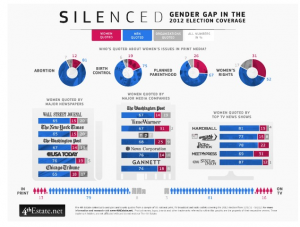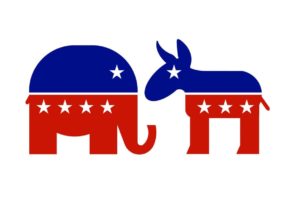As I was analyzing Mitt Romney tweets for a research paper, I noticed something that I didn’t notice in the 2008 election–Infographics.
GOP candidate Mitt Romney had a lot of infographics on his web site–so does President Barack Obama.
Here is President Obama’s take on Job Creation–
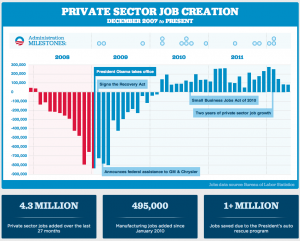
Here is Romney’s infographic about Obama’s presidency:
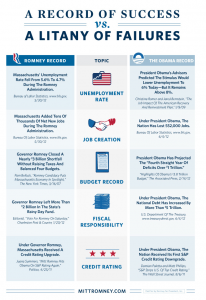
The candidate’s web sites show striking visual content that breaks down numbers, policies, and issues. The importance of how visual communication can affect the electorate’s understanding of the campaign is crucial to the end result–a vote.
The infographics add another layer to understanding what each candidate offers the American citizen. In the end, will the best infographics win the election?
Allan Dix says this:
Information visualisation can involve different senses, not just vision; visual representations are most common and often most powerful because of the overwhelming proportion of our brains dedicated to visual processing. Visualisation can be used to aid understanding or to persuade (or even mislead).
In other words, the American voter has to realize these infographics are just as rhetorical as a speech, tweet and or Facebook post. Infographics, as detailed as they are, are still setting an agenda for the campaign and creating a visual stereotype of the other candidate’s beliefs.
Below are two infographics target towards women. One is Romney’s version of Women and the Obama Economy:
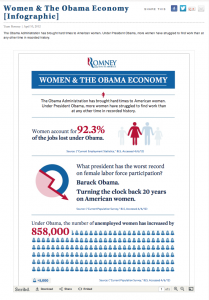
Here’s Obama’s infographic about women’s birth control facts:

Rhetorically, these two infographics are setting the agenda for how the campaigns are going to target women voters, one economically, and one socially.
Do these types of infographics help voters make well informed decisions or do these types of infographics create a more confused voter? I would like a third party infographic–one from an established unbiased news organization-(I know what you’re thinking… Ha! Good luck finding one of those these days.)
Data Journalism is here to stay as long as the Internet keeps the viral culture alive. Stanford has a great video series that explains the importance of this type of visual storytelling and why visualization narratives are important. Are campaign web sites reporting reliable numbers? I’m guessing the answer would be no and that the infographics between the two candidates are manipulated to fit the need of the infographic.
Another blogger, Frankie De Soto at MediaRumba.com , acknowledges that the new craze Pinterest is popular because people get to visually organize images according to their interests. In a way, these candidate’s infographics categorizes their beliefs, issues and policies for the reader. But, my fear is that the reader is just looking at the infographics and not the rest of the information that may accompany the issue. The images that candidates are using are vital to understanding their beliefs, but also, we must realize these visualizations are rhetorical and are used to persuade the voter. As the campaigns’ visual aspects are “cool” and “new,” remember the graphics do not tell the whole story. They only tell parts of the story that can help lead us to more information. But, as we seek out more information, and compare the graphics remember to seek out what other infographics are being used by others not campaigning and ALWAYS look at the infographics’ creators because they may have a hidden agenda.
I Googled “women and election infographic” and found this story and infographic at The Atlantic:
- The Atlantic article about the Gender Gap in the 2012 Election Coverage
Just remember infographics are part of a bigger rhetorical narrative that seeks to help the audience sift through the information overload quicker and to allow readers to compare and contrast the numbers. More importantly, remember to seek out more information because images can be deceiving.

